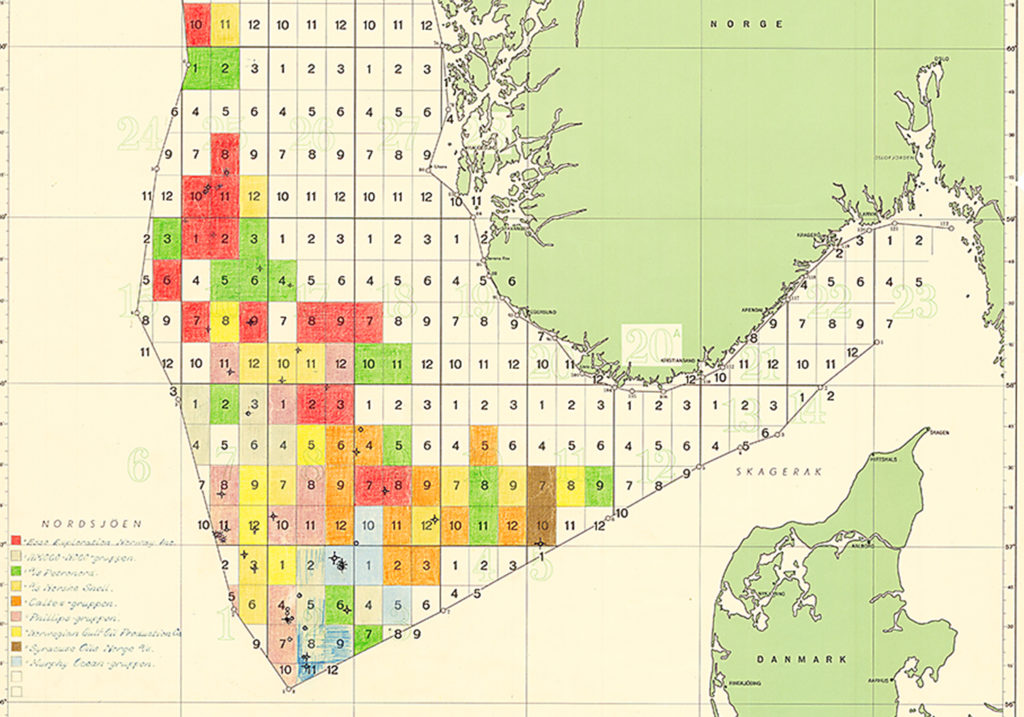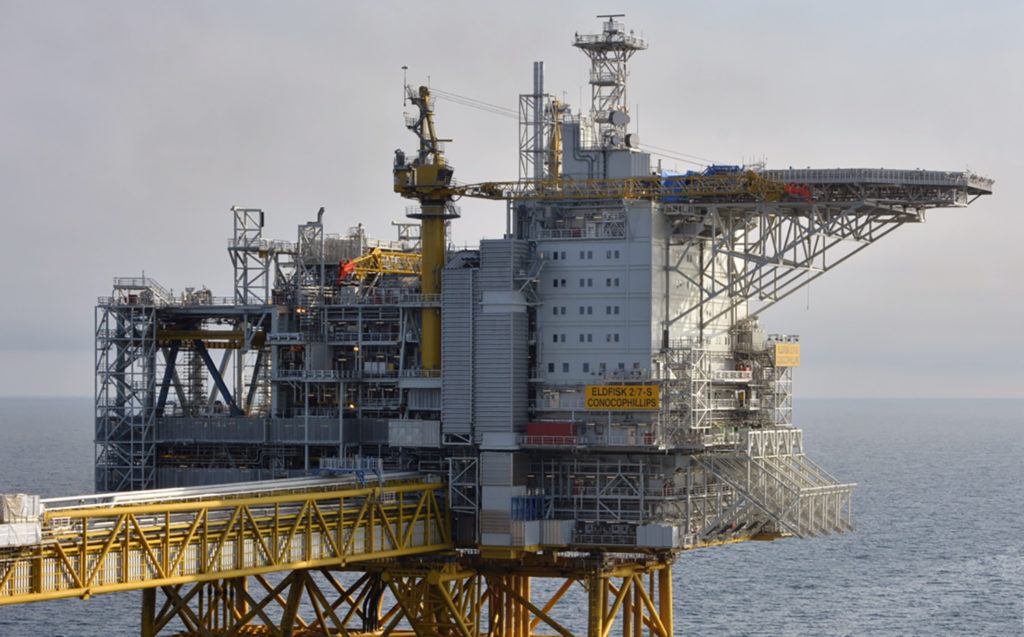Embla 2/7 D
- Unmanned and remotely operated wellhead platform
- Installed in 1992
- On stream 12 May 1993

 sokkelkart, illustrasjon, blokker, lisens, forsidebilde, engelsk,
sokkelkart, illustrasjon, blokker, lisens, forsidebilde, engelsk,The Phillips group was awarded block 2/7 as early as 1965, and the Embla reservoir lies in the southern part of this acreage. Drilling began there in 1974 to depths of 4 500-5 000 metres, but pressure and temperature in the wells were too high for testing with the available equipment.
The first production well was not drilled and tested until 1988, followed by a second in 1990. Both yielded very promising results, and the field came on stream in May 1993.
Embla comprises a sandstone reservoir at least 250 million years old. The other fields in the Greater Ekofisk Area comprise fine-grained carbonate rocks deposited about 70 million years ago.
The Embla reservoir has a temperature of 160°C compared with the 125°C normally found in the chalk formations 1 000 metres higher up, and its pressure is almost twice as high.
Fabricated by Heerema in the Netherlands, the Embla 2/7 D jacket (support structure) was installed by the M 7000 crane vessel. It stands 84 metres high and weighs 2 300 tonnes.
A 5.2-kilometre subsea umbilical from Eldfisk comprises three power cables for electricity supply and eight fibreoptic lines handling data transmission and telecommunication.
 Eldfisk 2/7 S, embla,
Eldfisk 2/7 S, embla,The platform has six production wells and an average daily output of roughly 7 000 barrels of oil. All processing and metering took place on Eldfisk 2/7 FTP until 2015, and has now been switched to Eldfisk 2/7 S.
A 14-inch flowline linked 2/7 D with 2/7 FTP and runs today to 2/7 S. Produced at Wick in Scotland, this line was floated out to the field in one piece.
Topside equipment includes the wellhead area, helideck (built by Vindholmen Services in Arendal), crane, control room, workshop, test separator and glycol pump.
Normally unmanned, the platform is maintained as and when required and therefore incorporates a simplified accommodation module with lounge, mess, coffee room, galley, changing room, WC and 12 emergency beds.
